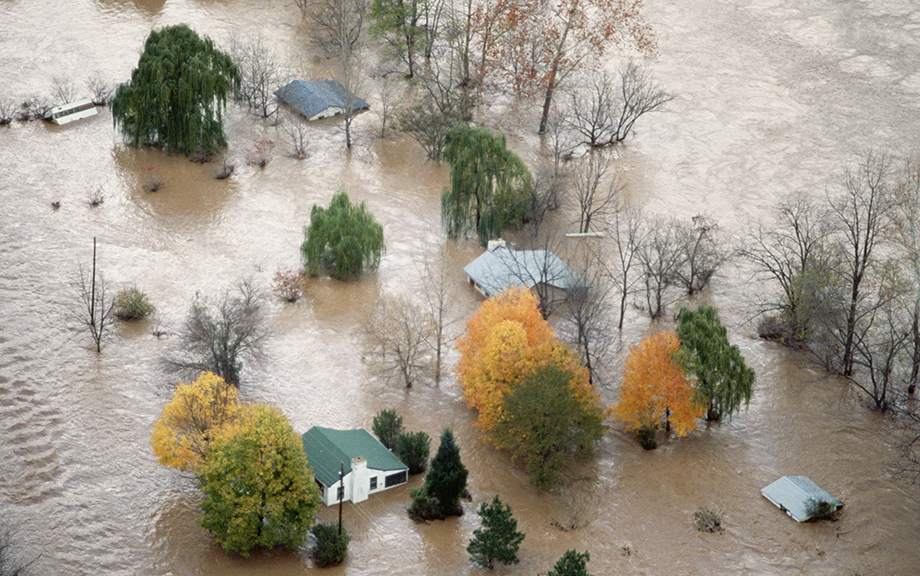How Exposed Are U.S. Banks’ Loan Portfolios to Climate Transition Risks?

Much of the work on climate risk has focused on the physical effects of climate change, with less attention devoted to “transition risks” related to negative economic effects of enacting climate-related policies and phasing out high-emitting technologies. Further, most of the work in this area has measured transition risks using backward-looking metrics, such as carbon emissions, which does not allow us to compare how different policy options will affect the economy. In a recent Staff Report, we capitalize on a new measure to study the extent to which banks’ loan portfolios are exposed to specific climate transition policies. The results show that while banks’ exposures are meaningful, they are manageable.
Moving Out of a Flood Zone? That May Be Risky!

An often-overlooked aspect of flood-plain mapping is the fact that these maps designate stark boundaries, with households falling either inside or outside of areas designated as “flood zones.” Households inside flood zones must insure themselves against the possibility of disasters. However, costly insurance may have pushed lower-income households out of areas officially designated a flood risk and into physically adjacent areas. While not designated an official flood risk, Federal Emergency Management Agency (FEMA) and disaster data shows that these areas are still at considerable risk of flooding. In this post, we examine whether flood maps may have inadvertently clustered those households financially less able to bear the consequences of a disaster into areas that may still pose a significant flood risk.
The Adverse Effect of “Mandatory” Flood Insurance on Access to Credit

The National Flood Insurance Program (NFIP) was designed to reduce household and lender flood-risk exposure and “encourage lending.” In this post, which is based on our related study, we show that in certain situations the program actually limits access to credit, particularly for low-income borrowers—an unintended consequence of this well-intentioned program.
The Costs of Corporate Debt Overhang Following the COVID‑19 Outbreak

Leading up to the COVID-19 outbreak, there were growing concerns about corporate sector indebtedness. High levels of borrowing may give rise to a “debt overhang” problem, particularly during downturns, whereby firms forego good investment opportunities because of an inability to raise additional funding. In this post, we show that firms with high levels of borrowing at the onset of the Great Recession underperformed in the following years, compared to similar—but less indebted—firms. These findings, together with early data on the revenue contractions following the COVID-19 outbreak, suggest that debt overhang during the COVID-recession could lead to an up to 10 percent decrease in growth for firms in industries most affected by the economic repercussions of the battle against the outbreak.










 RSS Feed
RSS Feed Follow Liberty Street Economics
Follow Liberty Street Economics